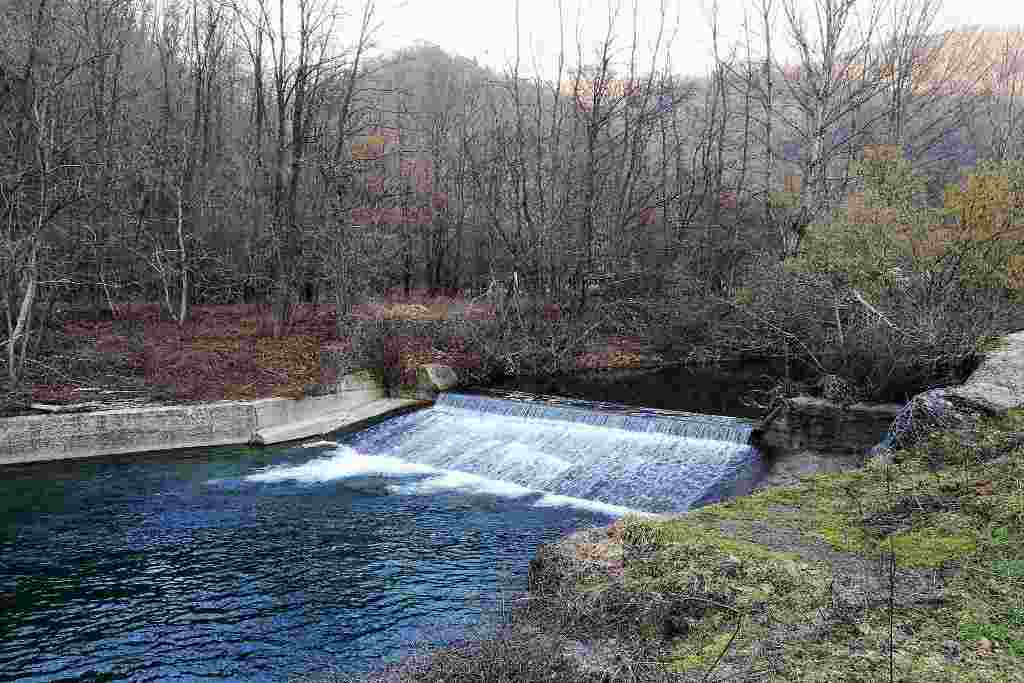Polenta is undoubtedly the fundamental recipe of this region. Recipes are diversified according to the territory. You go from the mountain to the hill to the sea. So for the mountain they prefer game, always with polenta. Going down you go from FRICO to I CJARSONS and pork shin to beer. Going down to the sea we find the Trieste scallops, the Trieste gulash and the famous clamp of Trieste. However it is a simple and popular cuisine.
Gratin scallops
these are a great starter from Trieste. It is often cooked for Christmas Eve dinner or New Year’s Eve dinner.
Needed for gratin scallops
- 8 scallops
- two tablespoons of fresh tomato sauce
- 30 grams of grated cheese like Parmesan cheese or grits
- a teaspoon of chopped parsley
- breadcrumbs, olive oil, salt and pepper just enough
Preparation of gratin scallops
Wash the scallops thoroughly and with a small knife open them. Just keep the concave part of the shell and wash it again under running water to eliminate any sand residue.
In a bowl mix together the cheese, parsley and breadcrumbs, adjusting salt and pepper. Put the scallops in a baking dish and on top of each one a teaspoon of compote that you have prepared before. Above again a teaspoon of tomato sauce and a drizzle of olive oil. Place in the oven already hot at 200 degrees for 5 or 6 minutes. Serve very hot.
FRICO, CRICO
It is a kind of omelette with potatoes, but in Friuli it is understood in many ways. Melted cheese is the basis of this dish, but in some places it is enriched with eggs, but also with vegetables.
Necessary for FRICO
- 300 grams of potatoes
- 300 grams of Montasio cheese half fresh and half seasoned
- 40 grams of butter
- 1 small white onion
- salt and pepper just enough
Preparing fRICO
First boil the potatoes in plenty of salted water.
In a pan with butter, let the finely chopped onion wither. When cooked add the potatoes that go slowly crushed in the pan itself. Cook for about ten minutes. Slowly add the cheese, which has been cut into small cubes and melt slowly. In a baking tin put the mixture and bake in a pre-heat oven at 180 degrees for 20 – 25 minutes. Serve very hot.
CJARSONS, C
This is a truly DOC first course. These are stuffed dumplings whose content changes depending on the area where it is cooked, but also from the chef’s flair.
Required for CJARSONS
For the pasta
- 450 grams of flour
- water and salt just enough
For the filling
- 250 grams of spinach already boiled and squeezed
- 3 tbsp chopped parsley
- 2 eggs
- 20 grams of sugar
- 3 slices rye bread
- 50 grams of grated maize
- 40 grams of dark chocolate
- 100 grams of cottage cheese
- 30 grams of raisins
- 40 grams of finely chopped candied cedar
- cinnamon powder
For the dressing
- 70 grams of melted butter
- grated cheese just enough
- grated smoked ricotta just enough
Preparing CJARSONS
Knead the flour with water and a pinch of sugar on a flat, until it becomes a firm and compact dough. Put the dough in a cool place covered by a cloth for about half an hour.
Prepare the filling in the meantime. In a large bowl put the chopped spinach and parsley, add the ricotta and gradually all the other ingredients and working with a wooden spoon get a soft and smooth mixture.
Now flatten the dough with a rolling pin until you get a rather thin pastry. Cut out discs about 4 centimeters in diameter, at the center of which place a filling spoon, fold the disc and weld the edges.
Now cook the CJARSONS in plenty of salted water and arrange them in a layered soup alternating the layer with the smoked ricotta and butter. At will at the last add a sprinkling of grated cheese. Serve very hot.
JOTA Friulana
Typical Friulana soup that you eat very well in the long winter usually very cold of Friuli.
Needed for JOTA Friulana
- 250 grams of beans
- 250 grams of sauerkraut
- 60 grams of pork belly
- 3 tbsp flour
- 150 grams of pork leg in small pieces
- 1 onion
- 50 grams of lard
- 1 garlic clove
- 1 bunch of sage and parsley
- salt and olive oil just enough
Preparing the JOTA Friulana
If using dried beans, soak the beans the night before. When using the beans, cook them in unsalted water for at least an hour and a half.
Prepare a sauté with the chopped lard, onion and garlic finely chopped and the bunch of sage and parsley also chopped.
In a bowl cook the tablespoons of flour with a couple of tablespoons of olive oil.
Add the pieces of pork leg, flour in to the oil and simmer for about 30 minutes. Apart from diced bacon, brown it with a couple of tablespoons of olive oil, add the sauerkraut into small pieces and season for two, three minutes. Add the sauerkraut to the pork leg and serve very hot.
Polenta messed up (PASTIZZADA)
Necessary for the pasty polenta
- 600 grams of yellow flour
- 1 litre whole milk
- coarse salt and water just enough
for the mess
- 500 grams of fresh sausage
- 200 grams of sweet ham
- 30 grams of sugar
- 130 grams of chicken livers
- 120 grams of butter
- 140 grams of grated cheese (grain or parmesan)
- a pinch of cinnamon
Preparing the pasty polenta
In a couple of copper pour a liter of milk and a liter of water with a pinch of coarse salt. Bring to a boil. Gradually add the yellow flour by working with the stick until cooked through. Turn the polenta over a chopping board, cool it and cut it into slices.
Let’s get ready for the mess now.
In a frying pan fry the chopped livers in butter, along with the sausage and sweet ham, finely chopped.
Sprinkle a tin and coat the bottom and sides with the polenta slices. Put a portion of the pan on top, sprinkle with grated cheese, sugar and cinnamon and make another layer of polenta. Continue until you finish the ingredients.
Place in the oven already hot at 180 degrees until the surface is golden brown.
Let’s move on to the second plates.
GULASCH Triestino
The origin of this dish is not Italian but Hungarian, in the one cooked in Trieste however, unlike the original is not cooked with potatoes.
Necessary for the TRIESTE GULASH
- 1200 grams of veal (also mixed with pork and beef)
- 100 grams of lard
- 1 teaspoon hot chilli
- 600 grams of onions
- 50 grams of butter
- a glass of white wine
- meat or nut broth and olive oil just enough
For the dressing
- two tablespoons of olive oil
- 20 grams of butter
- 1 celery rib, finely chopped
- 2 tbsp parsley
- 5 juniper berries
- a bay leaf
- 1 teaspoon chopped rosemary
- 10 grams of flour
- a pinch of curry
- salt, pepper and meat broth just enough
Preparation of the Trieste GULASH
In a rather large pan melt 3 quarters of the butter together with the oil and the beaten lard. When dissolved, combine the chopped onions and dry out. Add the meat, season for two minutes, then add the melted hot chilli in the white wine, the meat stock and simmer for about 45 minutes adding broth if necessary.
Put the remaining butter together with a couple of tablespoons of olive oil in a pan and fry the celery, parsley, bay leaf, juniper berries, chopped rosemary and curry. Adjust salt and pepper, add the flour and a little meat broth and boil for about half an hour adding broth if necessary. This mixture is combined with the meat and simmered for another hour. Serve very hot.
Trieste meatloaf
Necessary for Trieste meatloaf
- 1 kilograms of veal, pork and beef in equal parts.
- 4 eggs
- 100 grams of stale bread
- 40 grams of butter
- 70 grams of dark cheese
- salt, pepper and olive oil as required
Preparation of meatloaf with trieste
Pass the various pieces of meat to the meat grinder, add the stale bread and eggs. Adjust salt and pepper and form the classic meatloaf. Put it in a saucepan together with the olive oil and butter and cook for about 30 minutes with the lid. At this point cover the meatloaf of melted dark cheese and let it cook with the lid until the cheese melts. Serve the meatloaf in slices.
Let’s move on to the sweets
Apple Strudel
Necessary for apple strudel
- kg 1,500 apples
- 230 grams of flour
- 100 grams butter
- 1 egg
- 160 grams of sugar
- 100 grams of raisins
- 2 teaspoons baking powder
- the grated zest of a lemon
- salt as needed
Preparation of apple strudel
Prepare a dough with flour, melted butter, beaten egg and a little water. Form a ball and let it rest covered with a cloth.
In the meantime, let’s get the stuffing ready. After peeling, thinly slice the apples. Add the sugar, raisins, grated zest of a lemon and cinnamon.
Now roll out the dough into a rather thin pastry, put the filling on one half of the pastry and roll the pastry with the filling, welding the edges.
Bake in an already hot oven at 220 degrees for 30 minutes in a buttered baking pan.
And now a dessert typical of the Goritian tradition
THE GUBANA
Necessary for GUBANA
For the pasta
- 600 grams of flour
- 130 grams of butter already softened
- 600 grams of sugar
- a small glass of rhum or brandy
- the zest of a grated lemon
- 6 eggs
- a sachet of baking powder
- milk and salt just enough
For the filling
- 100 grams of almonds
- 100 grams of pine nuts
- 200 grams of walnut kernels
- 100 grams of raisins soaked in brandy
- 100 grams of candied, finely chopped
Preparing for GUBANA
First prepare the yeast. Then put two or three tablespoons of flour with the baking powder sachet and knead with a little milk. Let stand covered by a cloth for at least half an hour.
Beat the eggs, leaving the egg white that will serve for the finishing of the cake. Beat the eggs with sugar possibly with an electric beater to make it whip very well. At this point add the already softened butter, a pinch of salt, the rhum or brandy, the lemon zest and slowly the flour. This dough should be raised at least a couple of hours.
In the meantime, we prepare the filling by kneading all the finely chopped ingredients.
Now roll out the dough to get a not very fine pastry on which the filling will be put and the cake at this point is closed by rolling it like a snail. Pass over the beaten egg white.
Put it on a sheet of baking paper and put in a warm oven to rise about twenty minutes.
Remove from the oven, bring the temperature to 200 degrees and bake for about 40-45 minutes.


